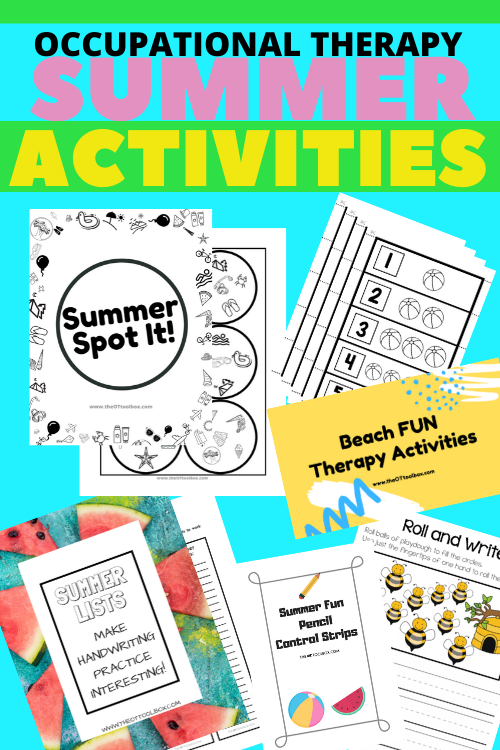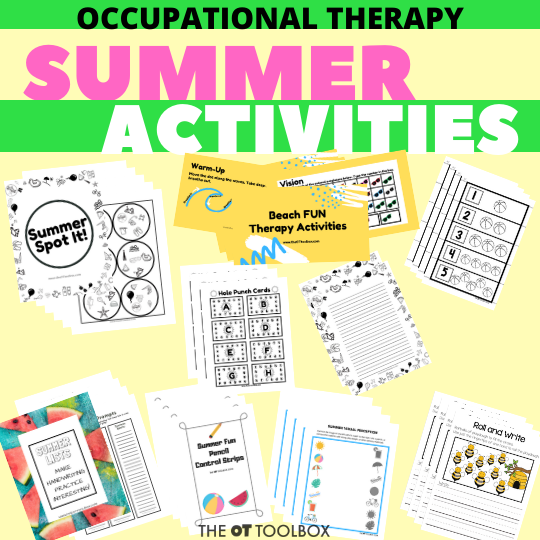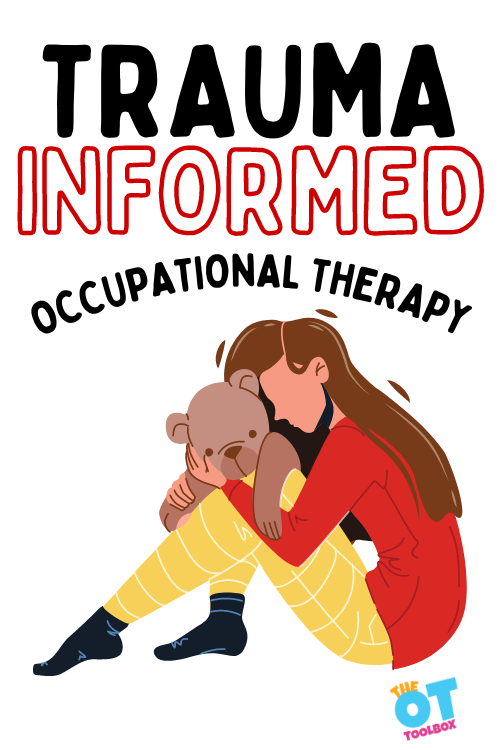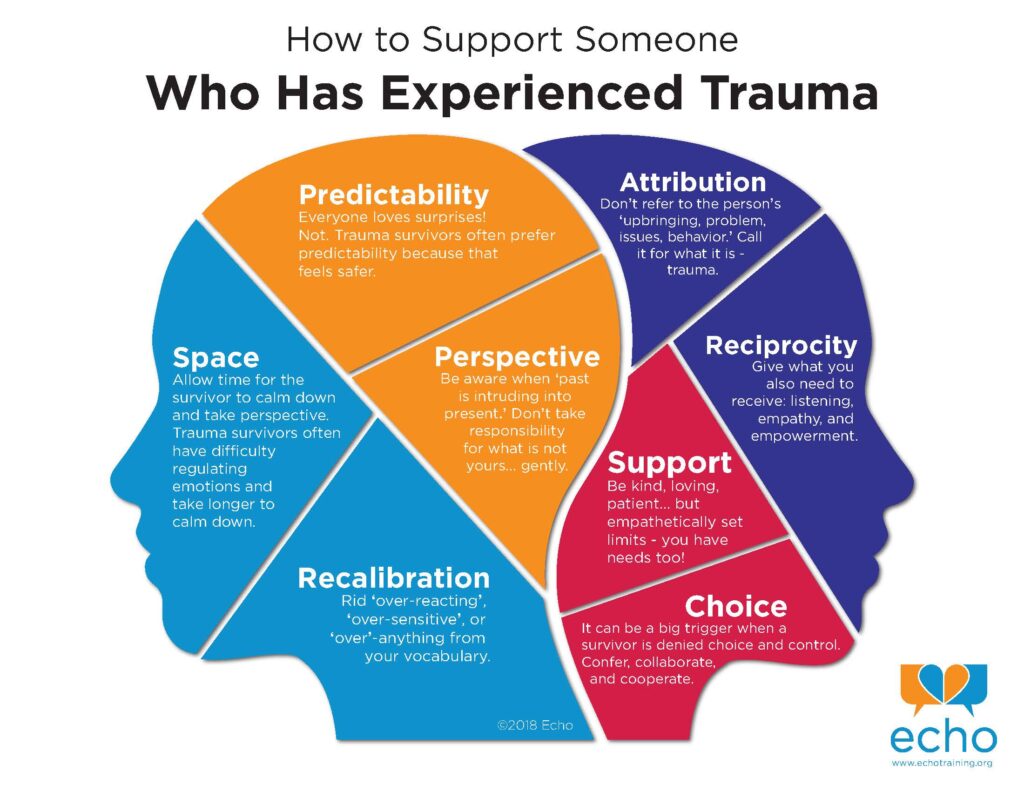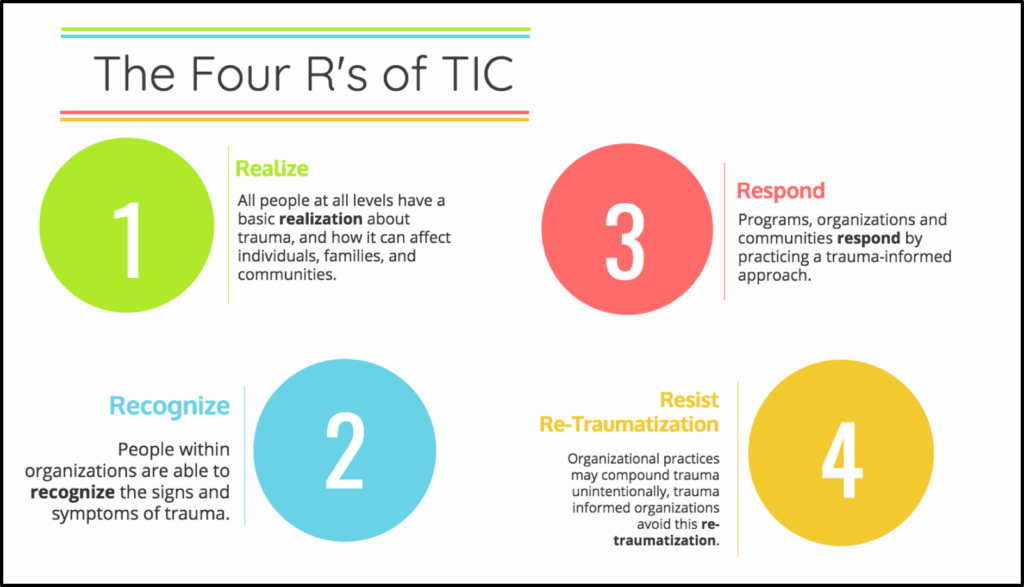If you are looking for Summer occupational therapy activities, this June occupational therapy calendar is for you! It’s loaded with June calendar ideas to help kids move, develop skills, and play this summer. Having a calendar for therapy activities ready to go is important to beat the summer slide when it comes to helping kids move with therapist-approved activities. Use this printable June calendar in occupational therapy home programs, summer lesson plans, and OT summer sessions! You’ll find more summer occupational therapy ideas on various places on the website.
To get you started, also try this resource on summer occupational therapy crafts and this printable 100 things to do this summer.
Both can be printed and used along with this free June activity calendar to support kids’ OT needs this year.

June Occupational Therapy Calendar
June Activities
- playing in a sprinkler
- going for a walk
- climbing a tree
- watching clouds
- making kinetic sand
The June calendar ideas include other activities at the bottom of the page to support a variety of needs. These ideas can be used to replace activities on the calendar, if needed.
All of the June activities support a variety of developmental areas. We’ve selected the activity ideas based on development of skills through play and movement.
Some of the developmental areas addressed in these June activities include:
- Sensory processing
- Visual processing
- Executive functioning skills
- Direction following
- Motor skill development (fine motor and gross motor)
Each June activity on the OT calendar targets sensory motor areas:
- Tactile input
- Proprioception
- Vestibular input
- Visual input
Some activities are guided by olfactory, auditory, and gustatory input.
We’ve selected these June activities to support areas of functioning such as:
- Handwriting
- Scissor skills
- Self-care
- Cooking (following recipes)
- Game play
- Exploring the community
More June Activities
You’ll be interested in our new Summer Occupational Therapy Activities Packet. It’s a collection of 14 items that guide summer programming at home, at school, and in therapy sessions. The summer activities bundle covers handwriting, visual perceptual skills and visual motor skills, fine motor skills, gross motor skills, regulation, and more.
You’ll find ideas to use in virtual therapy sessions and to send home as home activities that build skills and power development with a fun, summer theme. Kids will love the Summer Spot It! game, the puzzles, handouts, and movement activities. Therapists will love the teletherapy slide deck and the easy, ready-to-go activities to slot into OT sessions. The packet is only $10.00 and can be used over and over again for every student/client!
Grab the Spring Occupational Therapy Activities Packet HERE.

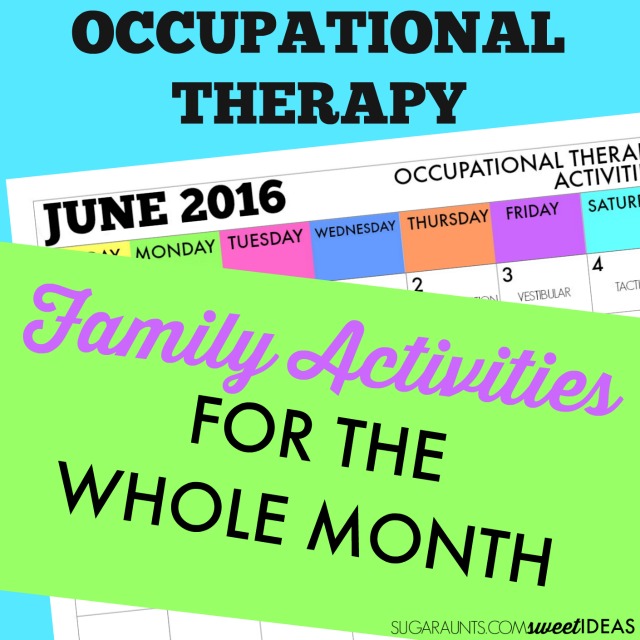
Want to take summer play to the next level? Be sure to grab your copy of the Summer OT Activities Bundle!
Free June Activity Calendar
Want to print off this calendar and add it to home programs or use it in therapy planning this summer? Enter your email address into the form below.
Want to add this resource to your therapy toolbox so you can help kids thrive? Enter your email into the form below to access this printable tool.
This resource is just one of the many tools available in The OT Toolbox Member’s Club. Each month, members get instant access to downloadable activities, handouts, worksheets, and printable tools to support development. Members can log into their dashboard and access all of our free downloads in one place. Plus, you’ll find exclusive materials and premium level materials.
Level 1 members gain instant access to all of the downloads available on the site, without enter your email each time PLUS exclusive new resources each month.
Level 2 members get access to all of our downloads, exclusive new resources each month, PLUS additional, premium content each month: therapy kits, screening tools, games, therapy packets, and much more. AND, level 2 members get ad-free content across the entire OT Toolbox website.
Join the Member’s Club today!

Colleen Beck, OTR/L has been an occupational therapist since 2000, working in school-based, hand therapy, outpatient peds, EI, and SNF. Colleen created The OT Toolbox to inspire therapists, teachers, and parents with easy and fun tools to help children thrive. Read her story about going from an OT making $3/hour (after paying for kids’ childcare) to a full-time OT resource creator for millions of readers. Want to collaborate? Send an email to contact@theottoolbox.com.


